The Scientist
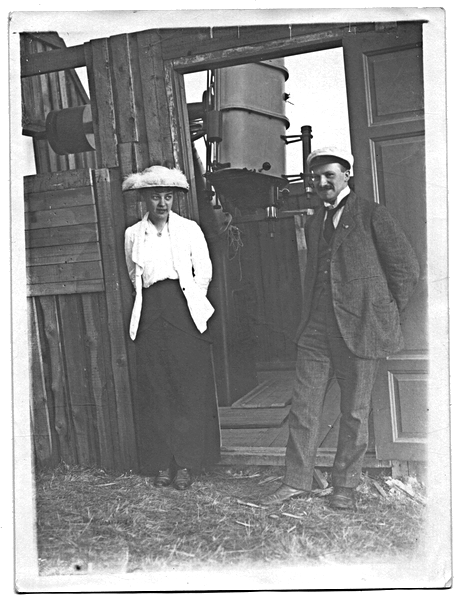 Eclipses in a strange way came to encircle Knut Lundmark’s life. Already when he was 25 years old he visited Österfose, Lappland (1914) as an assistant to help his benefactor Östen Bergstrand, professor in Uppsala. On the picture to the right he is, by the way, seen with another of professor Bergstrand’s assistents, Miss Andrea Lindstedt. Foto: Uppsala University.
Eclipses in a strange way came to encircle Knut Lundmark’s life. Already when he was 25 years old he visited Österfose, Lappland (1914) as an assistant to help his benefactor Östen Bergstrand, professor in Uppsala. On the picture to the right he is, by the way, seen with another of professor Bergstrand’s assistents, Miss Andrea Lindstedt. Foto: Uppsala University.
That Lundmark later in life became fascinated by these celestial phenomena was not strange. As a popularizer of science he soon realized that eclipses represented an effective pedagogical entry to widen the educated public’s interest in astronomy. After all, even Tycho Brahe became interested in astronomy as he as a teenager had experienced a partial eclipse in Copenhagen.
The two total eclipse’s 1945 and 1954 – visible in Sweden – lured out the popularizer Lundmark which is proved by two publications: Solförmörkelser förr och nu (Eclipses in Earlier and Modern Times), 1945, and Dagmörkret över Sydsverige den 30 juni 1954 (Daydarkness over Southern Sweden 30th of June 1954), (1954) – the later book printed in two editions and sold in more than 11 000 copies, a bestseller at the time.
In his book 1945 Lundmark, by the way, does not hesitate to point out the Uppsala Expedition to Österfose 1914 as the foremost of the four Swedish Expeditions. Several photos were taken and Östen Bergstrand could in due time, owing to those photos, understand the form of the solar corona in space.
In the book some diary notes are cited “by a participant in the Bergstrandian expedition” – it cannot be anyone but Lundmark himself who have handled the pen! [Här saknas på svenska – och engelska – vad dagsboksanteckningen sa. Blir poänglöst utan något citat.]
It was during the eclipse 1954 as the amusing picture of Knut Lundmark in a pilot’s helmet and his close associate was taken. The gentlemen followed the course of events from one of the planes of the airforce, taking off from the airbase in Halmstad. (Photo from Lundmark-collection.)
Also in 1945 Knut Lundmark followed the totality of the eclipse from an airplane.
Ulf R kompletterar här med lite Cassiopeiaplock om förmörkelsen.
Reader's tips:
Östen Bergstrands research about the solar corona in 1914, which he proposed to extend up to ten solar radii can be found in Bergstand's own major Swedish publication Astronomi (1935) (Astronomy).
Galaxkatalogen
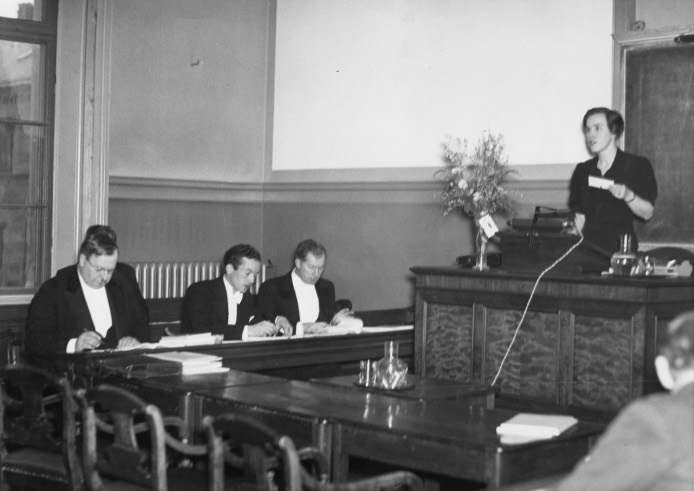 During Knut Lundmark's time as a professor in Lund, a number of researchers wrote their theses in astronomy, among them Frida Palmér (1905-1966), who became the country's first female Ph. D. in astronomy. Her speciality was irregular variable stars. In 1929, until the first years of World War II, Frida Palmér was connected to the department of Astronomy in Lund. Despite the support of Lundmark, she did not continue with her stellar research, mainlu due to World War II, which brought her to work for the FRA (National Defence Radio Establishment) and then as a physics lecturer in Halmstad.
During Knut Lundmark's time as a professor in Lund, a number of researchers wrote their theses in astronomy, among them Frida Palmér (1905-1966), who became the country's first female Ph. D. in astronomy. Her speciality was irregular variable stars. In 1929, until the first years of World War II, Frida Palmér was connected to the department of Astronomy in Lund. Despite the support of Lundmark, she did not continue with her stellar research, mainlu due to World War II, which brought her to work for the FRA (National Defence Radio Establishment) and then as a physics lecturer in Halmstad.
Right: Frida Palmér's attentive disputation in Lund on January 28, 1939. Lundmark to the left, her opponents M. Sc. Anders Reiz and Ph. D. N. Ambolt to the right. The photo was taken by legendary photographer Otto Ohm. Thanks to Peter Modie at Bildbyrån in Ljungbyhed, which made the unique photo available.
Right: A unique photo from Danzig, at present Gdansk, 1939 just a week before the outbreak of WWII - she attended Astronomische Gesellschaft with the board member Knut Lundmark and met with the German variable stars astronomer Margarethe Güssow (the lady to the upper left of Frida Palmér). Photo courtesy of Hilmer W Duerbeck via the archives of Astronomische Gesellschaft.
Right: A unique photo from Danzig, at present Gdansk, 1939 just a week before the outbreak of WWII - she attended Astronomische Gesellschaft with the board member Knut Lundmark and met with the German variable stars astronomer Margarethe Güssow (the lady to the upper left of Frida Palmér). Photo courtesy of Hilmer W Duerbeck via the archives of Astronomische Gesellschaft.
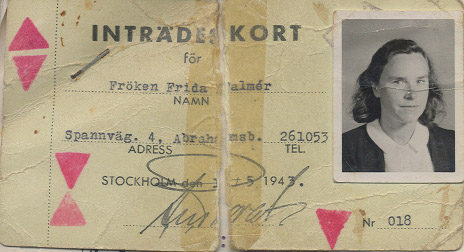 Her time as a cryptographer in the forerunner of FRA is referred to as in Bengt Beckman's book ‘Svenska kryptobedrifter’ (‘Swedish cryptographic accomplishments’) 1996. (Her id-card to the right has been made available by the FRA.)
Her time as a cryptographer in the forerunner of FRA is referred to as in Bengt Beckman's book ‘Svenska kryptobedrifter’ (‘Swedish cryptographic accomplishments’) 1996. (Her id-card to the right has been made available by the FRA.)
Russian-speaking Frida Palmér worked her way up in the FRA organization as a system analyst for decoding Soviet marine signal messages in the Arctic Ocean, headed for the group 53g, received a good salary but never got a recognition from cryptographers like Gunnar Blom or Sven Wäsström, who considered her as a "star analyst" of small significance.
The highest in command, Commander Torgil Thorén, stated however in a service certificate issued in 1943 that she always "challenged rapid perceptiveness, energy and prominent sense of ordination" and that "she always embraced the work with interest and dutifulness, as well with an observance of impeccable behaviour and honourable habits." Frida Palmér was allowed to be engaged in other things during her spare time. She was a trusted employée and no mail censorship was applied on her behalf. When she left service in 1945, she only had to promise not to mention anything of what she did or knew.
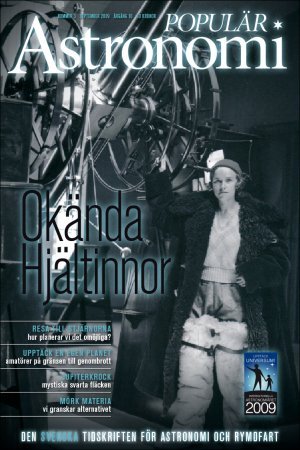 Frida Palmér was born in Blentarp, Scania, where she is buried. The tomb is handled by her former student Gunilla Lindberg and since some years even by Frida´s relatives. A memorial plate tells who Frida Palmér was and the grave is adorned with perennials in the shape of the Big Dipper.
Frida Palmér was born in Blentarp, Scania, where she is buried. The tomb is handled by her former student Gunilla Lindberg and since some years even by Frida´s relatives. A memorial plate tells who Frida Palmér was and the grave is adorned with perennials in the shape of the Big Dipper.
Reader's tips: More on Frida Palmér, written by Charlotte Helin, is available in Populär Astronomi nr 3 2010 (Swedish only). The article is illustrated with several unique photos.
This famous map of the entire visual sky in galactic coordinates was performed at the Department of Astronomy in Lund in the early 1950s. It has become known to astronomers all over the world through its dissemination in scientific journals and books. The work, which took two years, was performed by Martin and Tatjana Kesküla under the direction of Knut Lundmark. It was funded mainly by the Hierta-Retzius Foundation and by the Royal Physiographic Society in Lund. The map was completed in 1955. The original map has dimensions of 1 x 2 metres and belongs to the Department of Astronomy in Lund.
Scientific use
Why reproduce the sky oriented along the Milky Way band? The answer is that observed phenomena on the night sky often distribute symmetrically relative to the Milky Way band and the center of the Milky Way. The objects in the Milky Way are distributed naturally symmetrically around this Milky Way band. Even objects outside our galaxy seem to be distributed symmetrically around the same band, as it contains large amounts of shining and obscuring material, which make remote objects invisible to us.
How the map was made
The panorama is a drawing in Aitoff projection with galactic coordinates, where 7000 stars with known coordinates were plotted in exact positions. After that, the Milky Way band has been inscribed with photos from Solon I. Baileys and Frank E. Ross' Milky Way atlases as model. In this case, already plotted stars have served as orientation points. Since the different photographic images can show large differences in limiting magnitude, this has been corrected to a uniform value by means of the Dutch astronomer Antonie Pannekoek's isophotes. It is, among other things, the limiting magnitude, which makes it difficult to copy the different Milky Way photographs to the same look and paste them to a map.
The coordinate calculations and the co-ordination of the coordinate network and the plotting of the stars have been performed by Martin Kesküla, while the insertion of the nebulous parts has been performed by Tatjana Kesküla. The structure of the Milky Way band was worked out partly by a spraying procedure using an airbrush for the thinner parts, and partly by using a dot technique with a brush for the heavier marked parts. Throughout the work of Milky Way structure, this was checked periodically by placing a transparent paper with the plotted Pannekoek isophotes over the panorama.
It can also be mentioned that stars drawn using a pair of compasses appeared as unnaturally sharp points in relation to the more natural "hand-crafted" Milky Way background. It was therefore necessary to also diffuse the stars with the same dot technique used for the Milky Way band, so that they had the same appearance as the stars on the photographs.
Short orientation on the map
Since this projection of the starry sky deforms the familiar constellations, some orientation may be required. To the left we see the constellations Auriga and Perseus and the bright parts of Cassiopeia and Cepheus. The big dark divide in the Swan and Eagle appears to the left of the middle, where Sagittarius is visible. To the right of the middle, the Milky Way continues through Centaurus, the Southern Cross, Carina and Canis Major. The fainter parts on the right are Monoceros and Gemini, and on the far right we are back in Auriga again. In the lower right half we see the Magellanic Clouds, and far to the left, just below the Milky Way band, the Andromeda galaxy is visible.
Bo Nilsson
The pulsarium at Tycho Brahe Observatory
The Tycho Brahe observatory has a unique so called pulsarium. The idea originated from an article in the Sky & Telescope already in the 70's. Someone had placed on a small map of the Milky Way some lights whose flashing would represent the first discovered pulsars. Pulsars had recently been detected by radio telescopes. It turned out that they represented the first observational evidence of the existence of neutron stars.
 It was realised that we had a great opportunity to expand the concept. Through good contacts with Lund Observatory we obtained a photographic copy of the famous Milky Way panorama, in full scale. We drilled holes for 50 lamps. Then we drilled another 50 holes, the first lot was wrongly placed because we used the wrong galactic coordinate system! An extensive electronics construction was made by Mikael Nyquist. Each lamp was blinking at the same frequency as the pulse it represented. The result was excellent.
It was realised that we had a great opportunity to expand the concept. Through good contacts with Lund Observatory we obtained a photographic copy of the famous Milky Way panorama, in full scale. We drilled holes for 50 lamps. Then we drilled another 50 holes, the first lot was wrongly placed because we used the wrong galactic coordinate system! An extensive electronics construction was made by Mikael Nyquist. Each lamp was blinking at the same frequency as the pulse it represented. The result was excellent.
In the mid 90's, the observatory was subject to a disastrous fire, with the assembly house burned down and needing to be rebuilt from scratch. So also our pulsarium. This time a copy was made about 20% larger than the original(!). Lars-Olof Hansson built new and more modern electronics, this time for 100 pulsars. This (double) masterpiece, perhaps unique in the world, is viewed and admired by all visitors, and also gives incentive to tell about important parts of astronomy.
Why Did Karl Bohlin Laugh?Knut Lundmark often returned to a bizarre meeting with Stockholm Professor Karl Bohlin (1860-1939) when he presented his doctoral dissertation that placed the Andromeda nebula at more than 600,000 light years - contrary to Bohlin's own measurements. In his book Astronomical Discovery I (Harrier Book Publishing, 1951), Lundmark writes about himself in third person: |
|
|
"When this doctoral dissertation was presented to Professor K Bohlin, a funny episode occurred, which at least slightly softened the gloomy mood between the two. At the beginning of the dissertation, the author made a determination of the distance to the globular clusters. This gave a rather determined support in favor of Shapley's scale, thus pointed against Charliers's hundred times less distance scale. This part Bohlin found very good and meant that it suited Charlier well to hear "a word of truth". When the writer later came to Charlier, he could not appreciate the section on the spherical stars, but Bohlin was told how bad it was for his results. A third authority, who went through the dissertation, was not so happy with some conclusions, but at least thought it was excellent that Bohlin and Charlier got to hear how these conclusions reflected upon their own results concerning nebulae and stellar clusters. But we return to Bohlin. He began to darken already in the criticism of his direct distance determination to the Andromeda nebula. When Lundmark asked if it was possible that some systemic influences played a role, Bohlin said emphatically: "I want to draw attention to the licentiate that my measurements were made absolutely unconditional and with extreme accuracy." Of course, so also believed the licentiate, who in turn said he enjoyed all the admiration for the enormous work that Bohlin had made for his parallax measurement. No less than about 40,000 micrometer settings had been made on the photographic material. It would also take several years before Lundmark was able to obtain the probably definitive explanation of what had influenced the measurements in a systematic manner and brought about the wrong result that the Andromeda nebula would be 19 light years close, while in reality the distance is well over one million light years. The review continued! Lundmark had made a series of limity calculations, which in different ways determined a number of limit values, so that no nebulae could be located closer to us than these values. These limit values grew inevitably. In the end, the final result was announced, that closer to us than 20,000 light years were impossible. Now the great astronomer was very dissatisfied. Then came the two new methods, the use of the exploding suns and the brightest of the common suns in both systems. The distance to the Andromeda nebulae must be more than half a million light years, and that to the spiral in the constellation of the Triangle more thand one and a half million light years. Nor did this Bohlin any happier. Yes, the discussion continued. The author must of course stay on the defensive. Finally, the spotlights were also focused on the nebulae close to the South pole of the sky, the two Magellanic clouds, which in one way or another must be related to both the Milky Way and the spirals, although the clouds in question did not show any spiral structure. Lundmark had come to the conclusion that it was not necessary that all anagalctic nebulae were spiralshaped. He meant that the two Magellanic clouds were also systems like the Milky Way, but perhaps they were of a degenerate version, or that they even just were beginning to form spirals. He had now discovered a third Magellanic cloud, an object previously considered a spiral, but although it belonged to this class it at least showed an irregular structure and, above all, had a very similar resemblance to the greater of the Magellanic clouds . When the great astronomer came to a comparison, made in an image in the dissertation between the great Cloud and the former spiral-considered object, he burst into a bouncing laughter. Lundmark does not know even at this very moment, why Bohlin laughed so gladly. Somewhat, albeit not entirely, it made the atmosphere easier. But at the dissertation, Bohlin never believed and would never do it during his remaining life. " |
Andromedagalaxen |
|
Even in his masterpiece New heavens (1943), Knut Lundmark discuss Bohlin's results from 1907, that the distance to the system in Andromeda would only be 19 light years. Everything pointed at Bohlin´s use of the small 6-inch telescope in Stockholm was totally unfitted for that kind of measurements and that there were built-in flawed sources in the telescope, especially in the RA-angle. Karl Bohlin appears to have turned into a kufic and tragic person, which, according to some, run the Stockholm observatory almost tyrannical, and stood in the way of the new astronomy. When Bertil Lindblad became professor and Bohlin´s successor, Lindblad immediately put the new Saltsjöbads observatory on the map. Bohlin died in 1939. In spite of his previous relations with Bohlin (who strongly opposed Lundmark's appointment as professor in Lund), Lundmark wrote a honette summing up of his life in ASTB's Cassiopeia 1940s book, meaning that Bohlin was "quite a isolated nature" and difficult to come close to. In an article in the Malmö morning paper Sydsvenskan 8.11.1943 Lundmark returns to Bohlin and their discussion 25 years earlier. He still didn´t understand why Bohlin laughed in 1918.
|
|



_crop_PL.jpg)
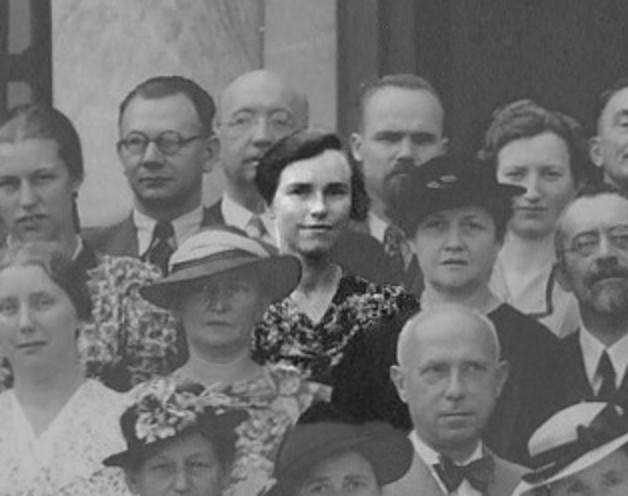
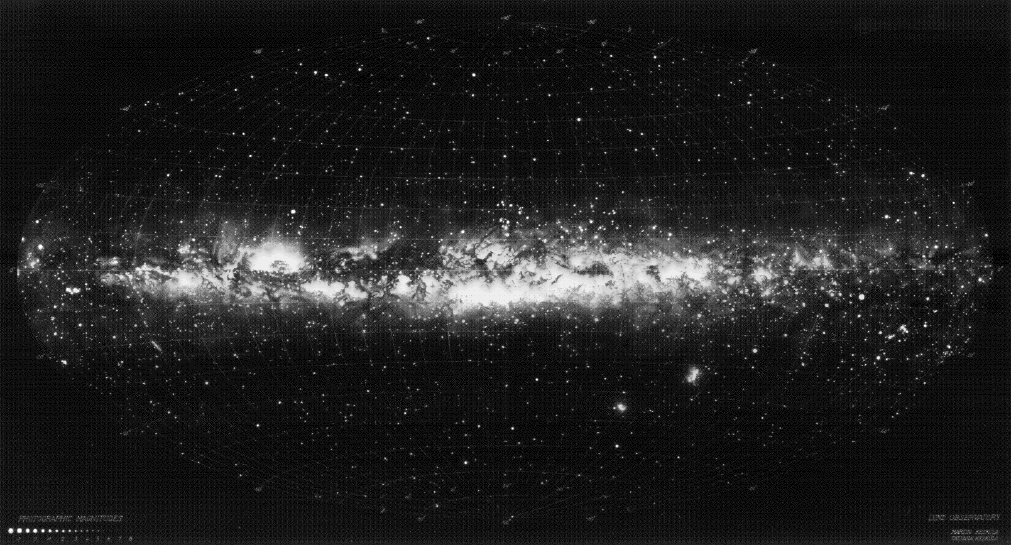
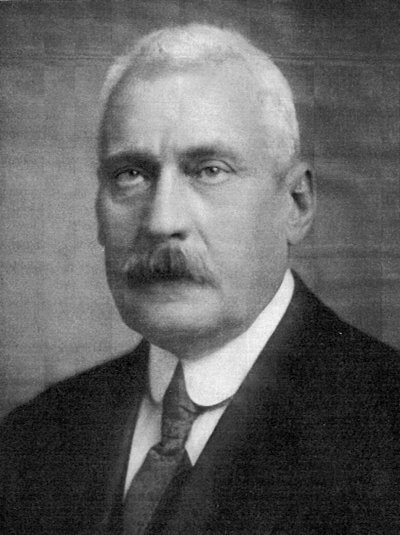
_thumb.jpg)
